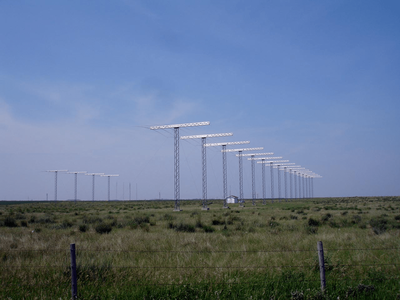Waves and tides in the atmosphere
Like the oceans, Earth's atmosphere has waves and tides within it. These waves and tides help move energy around within the atmosphere, including the thermosphere. Winds and the overall circulation in the thermosphere are largely driven by these tides and waves. Moving ions, dragged along by collisions with the electrically neutral gases, produce powerful electrical currents in some parts of the thermosphere.
The Super Dual Auroral Radar Network (SuperDARN) is an international scientific radar network consisting of 35 high frequency (HF) radars located in both the Northern and Southern Hemispheres.
SuperDARN radars are primarily used to map high-latitude plasma convection in the thermosphere, but the radars are also used to study a wider range of geospace phenomena including field aligned currents, magnetic reconnection, geomagnetic storms and substorms, magnetospheric MHD waves, mesospheric winds via meteor ionization trails, and interhemispheric plasma convection asymmetries. SuperDARN global convection maps are made available by PITHIA-NRF through the University Paul Sabatier in France.

SuperDARN site in Holmwood SDA, Saskatoon, Canada (Credits: SuperDARN Canada).
For questions, please contact outreach@pithia-nrf.eu
